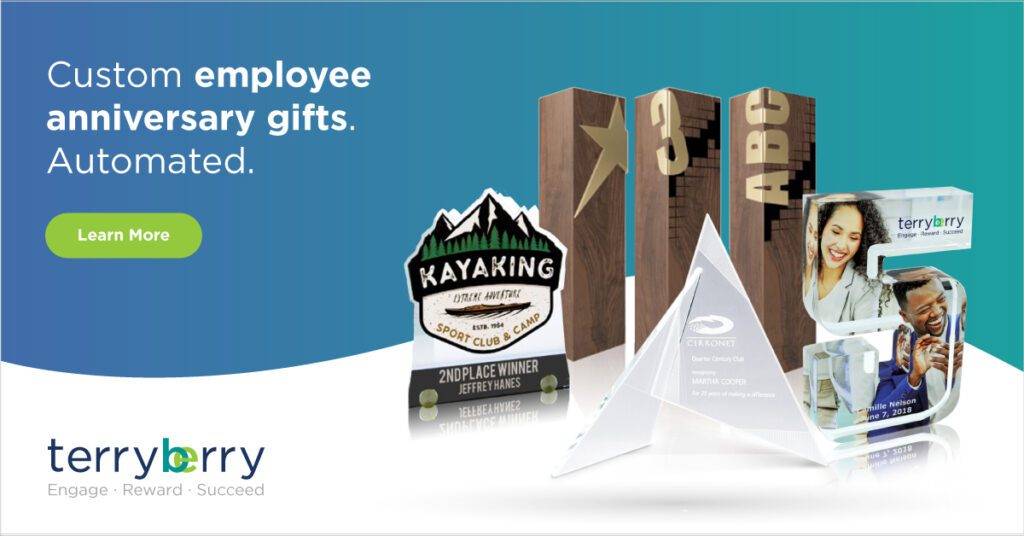June 11, 2024


Great leaders aren't born—they're made. It's not about having some innate talent or being naturally charismatic. Instead, great leadership comes from a commitment to personal and professional growth, and that starts with setting leadership development goals.
Leadership development goals help you identify the type of leader you want to become. They inspire you to learn from successes and failures, continuously hone your leadership skills, and evolve as a leader.
It involves being open to feedback, adaptable to change, and dedicated to the development of yourself and your team. That's not fluff, either.
Great leaders are all about being open to feedback (accepting you're not perfect), adaptable to change (dynamic and flexible), and dedicated to building yourself and your team (unselfish and empathetic).
Nail that, and you're destined to become one of the all-time greats.
Managers, executives, founders, team leads, parents, coaches, teachers—with the right mindset and goals, anyone can develop the qualities that make truly influential leaders.
And that development starts today.
Below, we'll help you find the right leadership development goals (and actionable next steps) to grow into the type of leader you want to become.
What Is a Leadership Development Goal?
Leadership development goals are specific objectives you set to improve your leadership abilities and, in turn, improve employee engagement. They're your roadmap to becoming the kind of leader you want to be. These goals give you direction, focus, and a clear path for growth.
When you set and achieve leadership goals, you're not just ticking off boxes—you're evolving. You learn more about your strengths, uncover areas for improvement, and build new skills that make you a more effective leader.
And that's not just good for you—it's good for your company, teams, and bottom line.
Better leadership starts with improved skills and personal qualities (skills like communication, emotional intelligence, and strategic thinking). You might aim to improve your active listening skills to better understand and support your team, or you might focus on developing your conflict resolution smarts to maintain a happy work environment.
Tailor your leadership development goals to your individual leadership style. No two leaders are the same, and what works for one person might not work for another. Maybe you're a natural-born cheerleader who thrives on motivating others, or perhaps you're more of a strategic thinker who loves planning and execution.
Embrace that. Your goals should reflect your unique style and areas where you want to grow.
How to Set SMART Development Goals
Setting goals is great, but your goals need an action plan—and that's where the SMART framework can help. We won't pretend this is your first time hearing about SMART goals, but a quick refresher might get you to actually implement it:
- Specific: Your goal should be clear and specific. Instead of saying, "I want to be a better leader," say, "I want to improve my communication skills by holding weekly one-on-one meetings with my team."
- Measurable: You need a way to measure your progress. This could be through feedback, performance metrics, or self-assessment. For example, you might track employee survey results to see improvement in communication.
- Achievable: Your goal should be realistic and attainable. Setting an unrealistic goal sets you up for failure and frustration. Aim for something challenging yet doable—like improving a specific skill rather than transforming your entire leadership style overnight.
- Relevant: Your goal should matter to you and align with your broader objectives. If building team cohesion is a priority, a relevant goal might be to improve your conflict resolution skills.
- Time-bound: Set a deadline to keep you focused and committed. A timeframe gives you a clear target to aim for and helps prevent procrastination. For example, commit to improving your communication skills within the next three months.
There's another element you should consider adding to your SMART list, but the acronym doesn't look as neat (SMART-A), so let's include it separately:
- Accountable: Share your goals with a mentor, coach, or team. When others know your objectives, they can provide support, encouragement, and positive feedback. This external accountability helps keep you on track and motivated.


Let's take a look at some SMART leadership development goal examples:
1. Team Cohesion: "By the end of the quarter, I will boost morale by recognizing individual achievements during our weekly meetings."
- Specific: Recognize individual achievements.
- Measurable: Weekly employee recognition during meetings.
- Achievable: Manageable within weekly meetings.
- Relevant: Improves team morale
- Time-bound: By the end of the quarter.
2. Public Speaking: "In the next three months, I will improve my public speaking skills by presenting at least two monthly team meetings."
- Specific: Improve public speaking.
- Measurable: Presenting twice a month.
- Achievable: Two presentations per month.
- Relevant: Improves communication skills.
- Time-bound: In the next three months.
3. Productivity: "Within six months, I will increase team productivity by 15% by setting clear weekly objectives and tracking progress."
- Specific: Increase productivity.
- Measurable: 15% increase.
- Achievable: Weekly objectives and tracking.
- Relevant: Boosts team productivity.
- Time-bound: Within six months.
20 SMART Leadership Development Goals to Consider


Below, we've put together a range of leadership development goals that cover everything from emotional intelligence and team management to networking and better reporting. This list should help you reflect on the type of leader you want to become and identify goals to get you there.
Remember, you don't need to set all 20 goals at once—nor should you. It's about quality, not quantity. Focus on one or two (maybe three) goals at a time and commit to them fully. Once you feel you've accomplished your goal, revisit this list and consider the next step in your leadership evolution.
We've provided an example SMART outline for each to show you how to set leadership development goals. Don't feel obligated to follow that one exactly—it's just there to give you some actionable ideas.
Emotional Intelligence and Self-Awareness
Humans are emotional creatures, and that's not a bad thing. Developing emotional intelligence isn't about overcoming a weakness—it's about recognizing emotional responses in yourself (and others).
Emotional intelligence focuses on understanding and managing your own emotions while also recognizing and influencing the feelings of others. It helps create a positive work environment, improves communication, and strengthens relationships within the team.
1. Build Emotional Intelligence
- Specific: Improve emotional intelligence by identifying and managing personal triggers.
- Measurable: Track instances of emotional reactions and how you managed them in a journal.
- Achievable: Focus on one trigger per month.
- Relevant: Improves self-awareness and team dynamics.
- Time-bound: Noticeable improvement within six months.
2. Practice Active Listening
- Specific: Improve active listening skills by giving full attention during team meetings.
- Measurable: Get feedback from team members on your listening improvements.
- Achievable: Apply active listening techniques in at least two meetings per week.
- Relevant: Strengthens communication and trust within the team.
- Time-bound: Implement this goal over the next three months.
Communication and Feedback
Better communication builds trust, fosters collaboration, and keeps everyone on the same page. It's not just about talking—it's about listening, understanding, and responding in a way that moves the team forward.
However, simply improving your communication is easier said than done—often, this is the quest of a lifetime. But it starts with the steps you start to take now.
3. Provide Constructive Feedback
- Specific: Give constructive criticism to each team member at least once a month.
- Measurable: Track the feedback given and note improvements in performance or behavior.
- Achievable: Focus on one or two key areas for each feedback session.
- Relevant: Helps improve team performance and development.
- Time-bound: Achieve this goal within the next three months.
4. Request Feedback from Others
- Specific: Actively seek feedback from your team after every major project.
- Measurable: Use surveys or one-on-one meetings to gather feedback.
- Achievable: Make it a regular part of your project wrap-up routine.
- Relevant: Improves your own growth and team dynamics.
- Time-bound: Implement this within the next six months.


Personal Development and Growth Mindset
A growth mindset is the belief that abilities and intelligence can be developed through dedication, hard work, and learning. Developing a growth mindset means you see challenges as opportunities rather than obstacles.
Business leaders with a growth mindset aren't afraid to take on challenges and learn from mistakes—and they inspire their teams to do the same.
5. Build a Growth Mindset
- Specific: Incorporate growth mindset principles into your leadership style by encouraging team members to embrace challenges and learn from failures.
- Measurable: Track instances where you and your team turn setbacks into learning opportunities.
- Achievable: Start with small steps, like regular team reflections on what was learned from each project.
- Relevant: Cultivates a company culture of continuous improvement.
- Time-bound: Implement within the next three months.
6. Engage in Ongoing Learning
- Specific: Commit to ongoing personal and professional development by attending workshops, reading leadership books, or taking online courses.
- Measurable: Complete at least one learning activity per month.
- Achievable: Choose manageable activities that fit your schedule.
- Relevant: Improves your leadership skills and knowledge, keeping you updated with leadership trends.
- Time-bound: Maintain this practice for the next six months.
Team Management and Delegation
Good team management keeps everyone aligned, motivated, and working toward common goals. It's your job as the leader to spearhead this initiative. It's not about micro-managing, either—it's about empowering your team with the meetings, resources, and know-how they need to operate with full autonomy.
7. Delegate More
- Specific: Improve delegation by assigning at least one significant project to a team member each month.
- Measurable: Track the projects delegated and their outcomes.
- Achievable: Start with smaller projects and gradually increase complexity.
- Relevant: Frees up your time for strategic tasks and helps develop your team.
- Time-bound: Implement this goal over the next four months.
8. Improve Team Collaboration
- Specific: Foster better collaboration by organizing monthly team-building activities.
- Measurable: Monitor participation and gather feedback on team dynamics.
- Achievable: Plan simple activities that encourage teamwork and communication.
- Relevant: Improves team cohesion and performance.
- Time-bound: Achieve this within the next six months.


Conflict Resolution and Problem-Solving
Conflict is inevitable—it's a matter of when, not if. However, good leaders know how to resolve it quickly and constructively to build teams rather than rip them apart.
9. Develop Conflict Resolution Skills
- Specific: Improve conflict resolution skills by attending at least two conflict management workshops.
- Measurable: Track the number of workshops attended and the techniques learned.
- Achievable: Choose workshops that fit your schedule and offer practical insights.
- Relevant: Improves your ability to manage and resolve conflicts within your team.
- Time-bound: Complete the workshops within the next six months.
10. Upgrade Problem-Solving Know-How
- Specific: Improve problem-solving skills by implementing a structured problem-solving process for team projects.
- Measurable: Use feedback and project outcomes to evaluate the effectiveness of the process.
- Achievable: Start with smaller projects to refine your approach.
- Relevant: Boosts your team's efficiency and innovation.
- Time-bound: Integrate this process within the next three months.
Time Management and Productivity
Better time management helps you prioritize tasks, reduce stress, and maintain a healthy work-life balance, while productivity helps you do more with less (something every team needs right about now).
11. Better Manage Your Team's Time
- Specific: Improve time management by using a digital planner to organize daily tasks and projects.
- Measurable: Track the completion rate of daily tasks and adjustments needed.
- Achievable: Start by planning out tasks for one week at a time.
- Relevant: Improves efficiency and reduces stress.
- Time-bound: Implement this habit within the next month.
12. Increase Productivity
- Specific: Boost productivity by implementing the Pomodoro Technique during work hours.
- Measurable: Track the number of Pomodoro sessions completed each day.
- Achievable: Begin with four Pomodoro sessions per day and gradually increase.
- Relevant: Improves focus and efficiency.
- Time-bound: Establish this practice over the next two months.


Building Relationships and Networking
Relationships built on trust and mutual respect improve collaboration and create a better work environment. You don't need to be best friends with your co-workers or direct reports, but you should have positive relationships with them.
However, these relationships don't develop from weekly Zoom meetings or sitting across from each other at work. You'll need to be a bit more intentional than that.
13. Strengthen Relationships with Team Members
- Specific: Improve relationships with team members by scheduling one-on-one meetings with each person at least once a month.
- Measurable: Track the number of meetings and note improvements in team dynamics.
- Achievable: Schedule meetings during regular work hours to make them manageable.
- Relevant: Builds trust and improves team cohesion.
- Time-bound: Implement this goal over the next three months.
14. Build Your Professional Network
- Specific: Attend at least one professional networking event per month.
- Measurable: Track the number of events attended and connections made.
- Achievable: Choose local events or online webinars to fit into your schedule.
- Relevant: Expands your professional network and opens up new opportunities.
- Time-bound: Maintain this practice for the next six months.
Strategic Thinking and Business Operations
Strategic thinking involves making decisions that align with your company's goals and anticipating future challenges and opportunities. While that might sound simple enough, it's a skill most leaders still need to develop.
15. Expand Your Strategic Thinking Skills
- Specific: Improve strategic thinking by dedicating one hour each week to reading industry reports and trend analyses.
- Measurable: Track the number of reports read and insights gained.
- Achievable: Allocate time in your schedule specifically for this purpose.
- Relevant: Keeps you informed about industry trends and improves decision-making.
- Time-bound: Implement this practice over the next three months.
16. Improve Business or Team Operations
- Specific: Streamline business operations by implementing a new project management tool.
- Measurable: Monitor project completion times and team productivity.
- Achievable: Choose a tool that integrates with your current systems and train the team on its use.
- Relevant: Increases efficiency and reduces operational bottlenecks.
- Time-bound: Complete the implementation within the next two months.

Adaptability and Flexibility
The world has been moving fast for decades, but things have changed quickly since 2020. Remote work, generative AI, tech—it's a whole new work landscape.
Being adaptable means adjusting to new conditions and challenges, while flexibility allows you to modify your approach as needed. Together, these traits help you survive and thrive in the constantly changing new normal.
17. Become More Adaptable
- Specific: Improve adaptability by taking on a new role or project outside your comfort zone.
- Measurable: Track your progress and document lessons learned from the experience.
- Achievable: Choose a role or project that is challenging yet feasible.
- Relevant: Prepares you for unexpected changes and broadens your skill set.
- Time-bound: Complete this goal within the next six months.
18. Adopt Flexible Leadership Styles
- Specific: Practice flexibility by using different leadership styles (directive, supportive, coaching) depending on the situation and team needs.
- Measurable: Solicit feedback from team members on your leadership style effectiveness.
- Achievable: Implement these styles in various scenarios over time.
- Relevant: Improves your ability to lead diverse teams and handle different situations.
- Time-bound: Integrate this practice over the next three months.
Tracking Progress and Measuring Success
Good team leaders keep progress moving in the right direction. They know what success looks like and the steps necessary to achieve it. And that starts with better tracking and measurements.
19. Better Track Progress
- Specific: Develop a system to regularly track the progress of team projects and individual goals.
- Measurable: Use project management software to monitor task completion and milestones.
- Achievable: Choose a tool that integrates easily with your existing workflows.
- Relevant: Helps keep projects on track and objectives met.
- Time-bound: Set up and start using the system within the next two months.
20. Set Better Goals and Milestones
- Specific: Define clear, measurable milestones for each major project
- Measurable: Track progress against these milestones using project management software
- Achievable: Break down projects into smaller, manageable tasks with deadlines.
- Relevant: Helps maintain momentum and ensures timely project completion.
- Time-bound: Implement this practice for all new projects starting next month.

Develop Stronger Leaders with Terryberry
Becoming a great leader is a journey, not a destination. Whether you're trying to grow yourself as a leader or steer your managers in the right direction, it all starts with your leadership development goals.
And we're here to help.
Our comprehensive suite of solutions—like surveys, recognition tools, and feedback systems—supports your leadership development every step of the way.
- Surveys: Use real-time insights to set targeted SMART goals that address the real needs of your team.
- Recognition: Celebrate your teams and leaders with meaningful feedback and social recognition.
- Rewards: Provide customizable rewards to recognize and appreciate your teams and leaders' efforts.
Whether you're focusing on improving your emotional intelligence, streamlining communication, or boosting productivity, Terryberry has the tools to support your goals. Our tools integrate into your daily routines to make it simpler for you to track progress and measure success.
Together, we can help you develop the skills and confidence you need to lead your team to success.
Explore Terryberry's solutionsand take the first step toward becoming a better leader.


